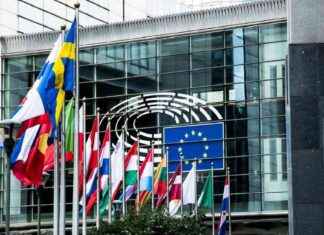Find here our update on yesterday’s situation.
Hundreds of people, driven by hunger, fled the north of the Gaza Strip on Sunday February 25 to try to reach the center of the enclave.
The aid, which enters in dribs and drabs through the Rafah crossing in the far south of Gaza, is subject to Israeli approval and its transport to the north – where 300,000 people are at risk of starvation according to the United Nations – is almost impossible due to destruction and fighting.
According to the latest report from the Hamas Health Ministry released on Sunday, the Israeli military offensive carried out in response to the terrorist attack of October 7, 2023 left 29,692 dead – a figure that cannot be independently verified and would include both combatants and civilians. .
Negotiators from Israel, the United States, Egypt and Qatar, meeting in Paris on Sunday, reached “common ground” on a “temporary ceasefire” in Gaza against the release of the hostages, Jake Sullivan, advisor to US President Joe Biden, said on Sunday.
“I’m not going to go into the details of that, because they are still being negotiated,” he explained Sunday on CNN, but “there will have to be indirect discussions of the Qatar and Egypt with Hamas, because in the end they will have to agree to the release of the hostages. This work is ongoing “. “We hope that in the coming days we can get to a point where there is actually a solid and final agreement on this issue,” Jake Sullivan said.
In parallel with these discussions held in Paris, Egyptian, Qatari, American, Israeli diplomats and Hamas executives resumed negotiations on Sunday in Doha for a truce in Gaza, announced a television close to Egyptian intelligence, and these discussions “will be followed by meetings in Cairo,” according to AlQahera News.
During the night from Saturday to Sunday, clashes continued in Beit Lahya and Zeitoun (North), but also in Khan Younès. The Israeli military said Sunday that a special unit “eliminated dozens of terrorists and located weapons” in the town in the southern Gaza Strip.
Meanwhile, concern is also growing in Rafah, on the closed border with Egypt, where at least 1.4 million people are massing in precarious conditions, most of them displaced, who are threatened with an operation large-scale land military. Israeli Prime Minister Benjamin Netanyahu said on Saturday that he would convene “at the beginning of the week the cabinet to approve the operational plans for action in Rafah, including the evacuation of the civilian population.”
On Sunday, during an interview with the American channel CBS, Mr. Netanyahu warned that the offensive in Gaza would only be “delayed” if an agreement leading to a truce was reached. In the event of an operation in Rafah, Israel will only be “a few weeks away” from a “total victory” against Hamas, Mr. Netanyahu also assured.
Iran on Sunday condemned the strikes by the United States and the United Kingdom carried out the day before on Houthi rebel sites in Yemen, accusing Washington and London of “raising tension and crises” in the region.
“With such attacks, America and the United Kingdom seek to increase tension and crises in the region, and to expand the scope of war and instability,” the spokesperson warned of the Iranian Foreign Ministry, Nasser Kanaani, in a press release.
The Houthis, who control a large part of Yemen, have been carrying out attacks in the Red Sea and the Gulf of Aden since November against ships they consider linked to Israel, saying they are acting in “solidarity” with the Palestinians in the context of the war in Gaza.
Faced with these attacks, Washington set up a multinational coalition in December to “protect” maritime traffic in these strategic waters. And, since mid-January, the United States and the United Kingdom have carried out several strikes in Yemen against the Houthis, who have also designated American and British ships as “legitimate targets” from now on.






